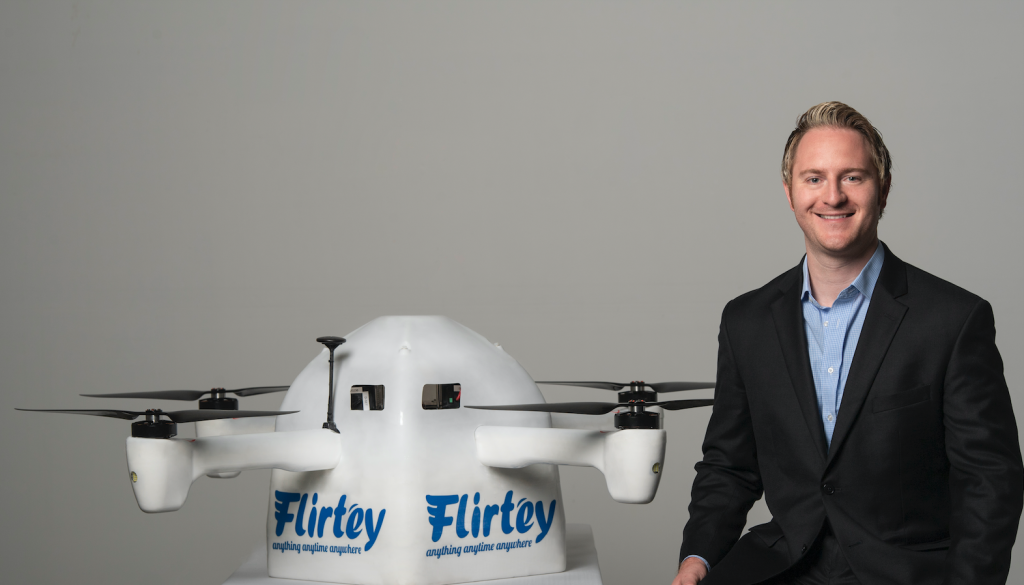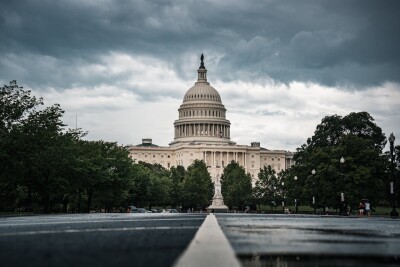A few days ago, we wrote an article calling for the Federal Aviation Administration (FAA) to follow an accelerated model similar to what the Federal Drug Administration (FDA) is currently applying to the development of a vaccine to combat the Covid-19 pandemic.
Almost immediately, we received a letter from Flirtey in support of the argument and elaborating on the reasons why the accelerated approval process implemented by the FDA to expedite the development of a cure for the Covid-19 virus can be emulated by the FAA to accelerate the regulatory process for delivery drones.
Flirtey’s letter coincided with a major announcement that they have received a patent for the safe and precise drone delivery of packages. We reached out to Matthew Sweeny, Founder and CEO of Flirtey, and he graciously agreed to an exclusive interview to talk about the patent and the FAA approval process for delivery drones.
Juan Plaza: Why do you think that the FDA accelerated approval process for a vaccine is a good model to follow by the FAA for delivery drones?
Matthew Sweeny: Delivery drones are a safe and efficient way to bring goods to households with minimal human touch and intervention. Imagine the lives that can be saved by allowing people to stay home and order groceries or medicines online with delivery within minutes. This reality is within our grasps technologically; all we need is the regulatory framework to make it a reality.
So, what do you think are the necessary steps that the FAA can take to advance the regulation?
Flirtey is working closely with the regulators, and regulations are risk-based. This means that regulators take into account the risks, as well as the benefits, when approving transformative new technologies. Today, the risk of flying over people is the lowest it has ever been because cities across the country are under shelter-in-place orders, and the risk to general aviation is the lowest it has ever been because general aviation flights are at an all-time low. In parallel, the benefits are at an all-time high because Flirtey’s technology has the ability to provide no-contact delivery direct to consumers and essential items to high-risk populations to help slow the spread.
In your opinion what are the most important aspects of this accelerated regulatory process?
Two important aspects are regulatory clarity and federal preemption. The FDA has a very clear regulatory process, involving phased clinical trials, which are clearly understood by investors, enabling huge investments and job growth. This level of clarity in the drone delivery industry would enable huge investment into this critical industry. Also, maintaining federal preemption is also important, to enable the scalability of drone delivery nationwide, empowering state and local governments who want to attract drone delivery to their communities to be the first movers in this growing industry.
In terms of innovation, isn’t drone delivery just another method to bring packages to houses?
Drone delivery is disruptive and transformative. At Flirtey, we are disrupting the old model of Hub & Spoke and replacing it with a more distributed standard in which every small business will have access to the supply tools that big players have today. The ability to reach your customer directly without incurring enormous costs is transformative.
There are different types of deliveries such as medicines, groceries, general retail, and home improvement, do you think there will be different protocols for each?
What these industries have in common is that people want delivery at high speed and low cost. Flirtey has designed our technology to scale across industries. The Flirtey Eagle is designed to carry approximately 75% of Flirtey’s customer packages across industries including food, logistics, on-demand delivery, convenience and medical. The Flirtey Eagle drone delivery system is designed for the goal of 10-minute delivery from our partner stores to customer doors.
Tell me more about the recent announcement of the issuing of a delivery patent.
It’s an exciting development. This key patent describes a combination of hardware and software that enables the delivery of packages by drone, potentially lifting the package to pick it up, holding it securely and lowering it once at the point of delivery. Flirtey’s drone delivers its contents by lowering a tether, while the drone is suspended in air, and once the package is delivered, it then retracts the tether. Flirtey invented this method of delivery to be the safest and most precise, and it has since become the standard for the drone delivery industry.
And you have concluded that using a tether is the safest way to go?
Yes, we have used this method for years, and we believe it is the safest and most efficient method of delivery. The patent covers fundamental technology at the core of the drone delivery industry, which is key to reliable and effective delivery and/or pickup of packages by a UAV, while the UAV remains in hover. Flirtey’s new patent describes a drone with a suspension mechanism, used to hold a package that is to be delivered or picked up, a locking mechanism to hold and release the package, and a package delivery mechanism to deliver the package.
Any concerns about privacy?
Flirtey is a privately held company and is laser-focused on our mission to save lives and improve lifestyles by making delivery instant for everyone. Flirtey’s privacy-driven core values position the company as community friendly and as the leading independent alternative to our larger competitors. Flirtey’s drone delivery technology was developed from the ground up, originating from NASA’s drone program.
Any final thoughts?
Flirtey’s mission is to save lives and improve lifestyles by making delivery instant for everyone, and we are working closely with regulators to enable drone delivery to save lives and transform our society for the better.















Comments